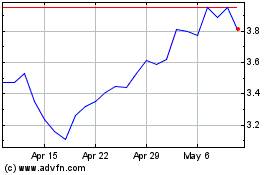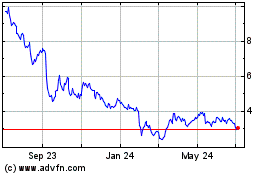- Ship deliveries slowdown since peak of
2011 and 2012 gives rise to increased vessel conversions,
efficiency designs and shipyard consolidation
- Optimal fuel efficiency and ship class
diversification are key factors to a rebound in charter rates,
possibly towards year-end 2015 and beyond
The slowdown in fleet supply growth for dry bulk ships should
result in better diversification in ship sizes (or tonnage balance)
over the next few years. This trend will play out as innovative
vessel conversions, better fuel efficiency designs and shipyard
consolidation become key factors for maritime stakeholders in
restoring freight rates to satisfactory levels, according to the
latest analysis by IHS Maritime & Trade, a division of IHS Inc.
(NYSE: IHS), the leading provider of critical information and
insight.
IHS Maritime & Trade’s latest Fleet Capacity Forecast shows
that about 47 million dwt (deadweight tonnage) of dry tonnage ships
was delivered in 2014, which increased the total fleet capacity to
730 million dwt. The capacity addition in 2014 was, however, 22
percent lower than in 2013 and nearly 53 percent lower than in
2012.
“After a promising 2013, it looked as if the upturn in the dry
bulk market would begin early in 2014. However, a slowing Chinese
economy led to a fall in the volume of cargo imported. This,
combined with the steady flow of newbuilding ship deliveries
throughout the year, has put freight rates under severe pressure,”
said Richard Clayton, chief maritime analyst at IHS Maritime &
Trade. “The Baltic Dry Index, which charts the fortunes of the dry
market, hit a historic low level in February 2015. I think this
year could be challenging for ship owners.
“The upside of a low dry market is that owners are less likely
to order ships. If this continues into the medium term, the
prospect for recovery is good,” Clayton said. “On the other hand,
investors might use the opportunity of low ship prices to place
orders in the expectation of an upturn. There are several variables
at play. As always, the key to recovery is maintaining
discipline.”
Most of the tonnage that entered the fleet was in the Panamax
and Capesize segments, about 40 percent of the total in each
category, while there were some noteworthy deliveries in the large
Handy and Supramax segments adding up to about 10 percent of their
2014 totals.
IHS Maritime & Trade expects deliveries will show a slight
acceleration in 2015 as they were about 40 percent higher (totaling
76 million dwt) than in 2014. If all deliveries come to fruition,
this would mean a 10.5 percent total (dry bulk) fleet growth for
2015.
Table 1: Size Profile of Dry Bulk Ships 2015
Size (dwt)*
In Service
On Order 10,000-24,999 855 18 25,000-39,999
2147 367 40,000-49,999 744 49 50,000-59,999 1927 81 60,000-99,999
2687 872 100,000-119,999 119 6 120,000+ 1517
304
*Ship class includes: Handysize, Handymax Supramax,
Post-Panamax, Ultramax, Capesize, VLOC, ULCC
Source: IHS Maritime & Trade, April 2015
Incentives for Innovation
Given the changing environment, shipowners usually look for
options to make their investments commercially viable and weak
markets provide an incentive for innovative vessel conversions and
designs that improve fuel and operational efficiency. This could
lead to improved charter rates and so help the market to rebound,
the IHS analysis says.
“Energy-efficient designs offer a competitive edge in a
depressed market, helping to develop a two-tier structure,” Clayton
said. “Ships with fuel-efficient engines and improved operating
capabilities will be able to negotiate better rates than their
older counterparts. While the price of bunkers is low, the
difference in rates is not so significant, but increasing demand in
future will favour modern vessels.”
In 2015, IHS Maritime & Trade sees a significant number of
completions in the Ultramax class (64,000 dwt), with about 280
vessels. Among these deliveries are modern designs such as the
first of the series of four sisters built to Tsuneishi
Shipbuilding’s TESS6 Aeroline design. They will be fitted not only
with new technology for reducing wind resistance but also with new
propellers for lower vibration and higher propulsion
efficiency.
At the smaller end of the market, 75 orders for the 38,000 dwt
Handysize vessels are being built at Chinese shipyards using the
Green Dolphin 38 design. The hull is designed for optimal fuel
efficiency without compromising strength and operational
flexibility.
In the larger sizes, Mitsubishi Heavy Industries has developed a
bulk carrier vessel design that offers reductions in carbon dioxide
emissions by about 25 percent compared with conventional
bulkers.
Tough market conditions are also encouraging shipowners to seek
new ways to operate their fleets, even negotiating with competitors
with a view to mergers and cooperation.
One example of this has been discussions between five dry bulk
ship owning groups to create Capesize Chartering, a way to secure
more favourable chartering terms while reducing costs, the IHS
analysis says.
“Putting pride aside, consolidation and collaboration are tried
and tested ways to weather the challenging times,” Clayton said.
“Shipping alliances such as Capesize Chartering help owners to take
control over supply and demand in the short term by positioning
their vessels to increase freight rates until the market picks
up."
The IHS Maritime & Trade Fleet Capacity Forecast is an
online tool providing quantitative forecasts of the world fleet to
2025 with in-depth analytical reports by ship type harnessing Big
Data analysis techniques.
For more information about subscriptions to this service,
contact Americas at +1 800 447 2273 or customercare@ihs.com; in
Europe, Middle East and Africa at +44 (0) 1344 328 300 or
customer.support@ihs.com; and in Asia and Pacific Rim at +604 291
3600 or supportapac@ihs.com.
About IHS
(www.ihs.com)
IHS (NYSE: IHS) is the leading source of insight, analytics and
expertise in critical areas that shape today’s business landscape.
Businesses and governments in more than 150 countries around the
globe rely on the comprehensive content, expert independent
analysis and flexible delivery methods of IHS to make high-impact
decisions and develop strategies with speed and confidence. IHS has
been in business since 1959 and became a publicly traded company on
the New York Stock Exchange in 2005. Headquartered in Englewood,
Colorado, USA, IHS is committed to sustainable, profitable growth
and employs about 8,800 people in 32 countries around the
world.
IHS is a registered trademark of IHS Inc. All other company and
product names may be trademarks of their respective owners. © 2015
IHS Inc. All rights reserved.
If you prefer not to receive news releases from IHS, please
email Danny.Cheung@ihs.com. To read our privacy policy, click
here.
Photos/Multimedia Gallery Available:
http://www.businesswire.com/multimedia/home/20150415006913/en/
IHS Inc.Danny Cheung, +65 6439 6192Danny.Cheung@ihs.comorPress
Team+1 303-305-8021press@ihs.com
IHS (NYSE:IHS)
Historical Stock Chart
From Mar 2024 to Apr 2024

IHS (NYSE:IHS)
Historical Stock Chart
From Apr 2023 to Apr 2024
